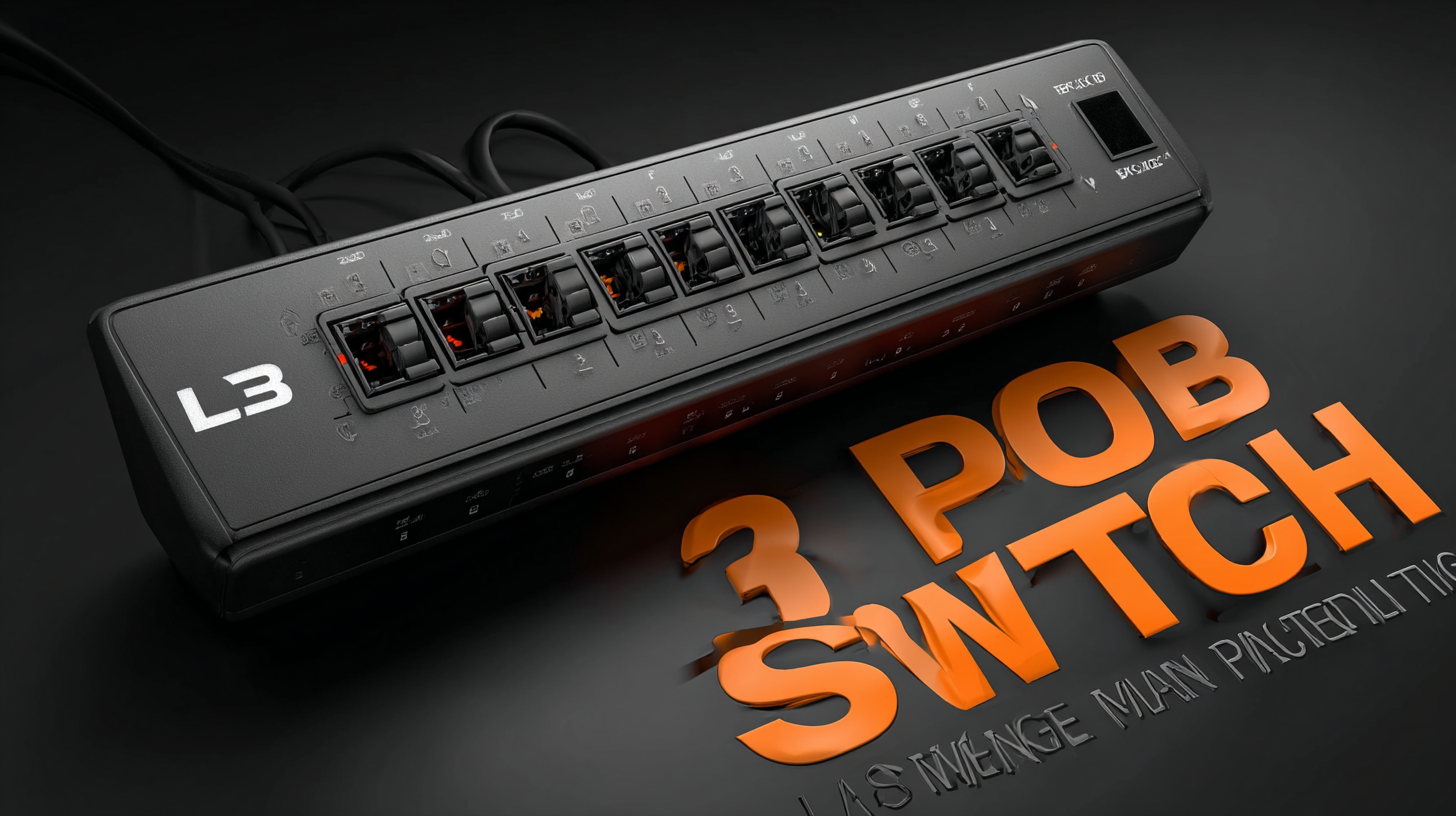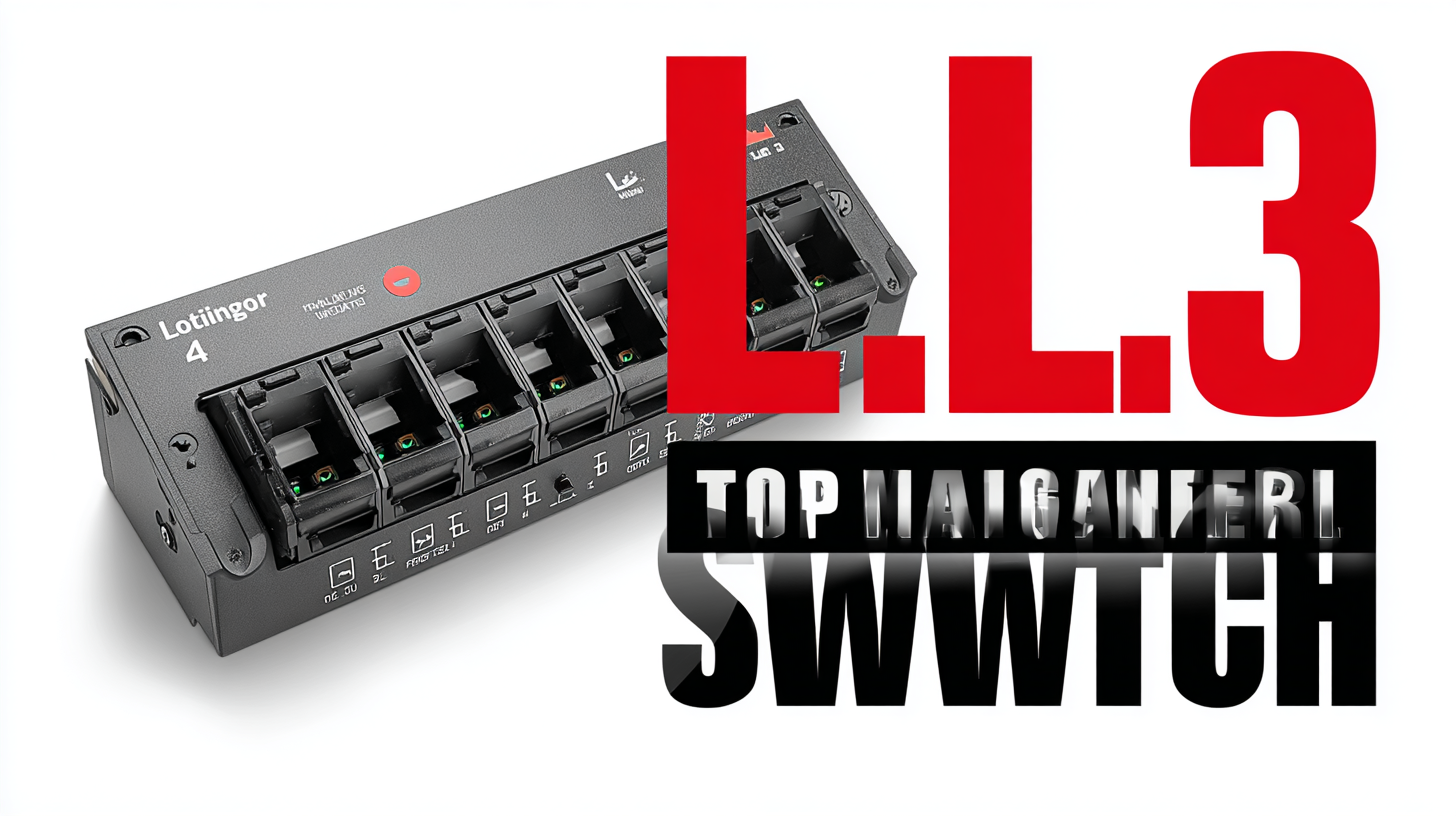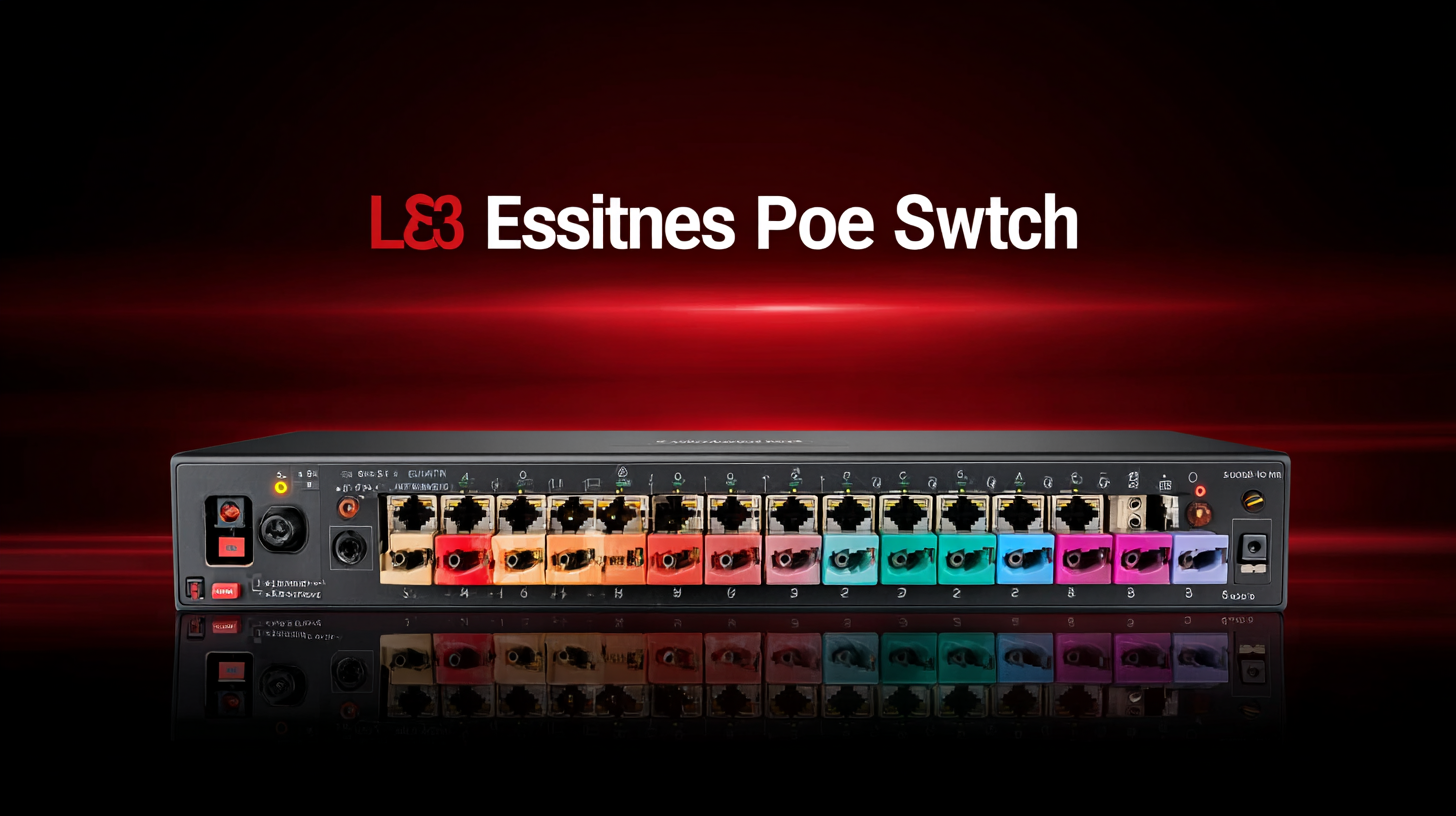
- hasivo@hasivo.com
- Mon - Sat at 7:00AM to 9:00PM
Leave Your Message

In the ever-evolving landscape of network infrastructure, the demand for efficient power management and robust data handling has never been greater. According to industry reports, the global market for managed switches is projected to reach $15 billion by 2025, driven by the increasing need for reliable connectivity in smart buildings and IoT applications. An L3 Managed PoE Switch stands at the forefront of this transformation, providing enhanced performance and the ability to deliver power over Ethernet to connected devices seamlessly. As businesses look to optimize their network operations, the choice of an L3 Managed PoE Switch becomes critical. This blog will explore five essential tips to help you select the best L3 Managed PoE Switch tailored to your specific needs while emphasizing the importance of quality manufacturing, particularly from trusted Chinese manufacturers who lead in global exports.

When selecting the best L3 Managed PoE switch, it's crucial to focus on key features that align with your networking needs.
 First and foremost, consider the port configuration. A good L3 managed PoE switch should provide sufficient PoE ports to power devices such as IP cameras and VoIP phones,
ensuring that it supports your current setup and potential future expansions.
A switch with at least 24 ports is typically suitable for most small to mid-sized businesses.
First and foremost, consider the port configuration. A good L3 managed PoE switch should provide sufficient PoE ports to power devices such as IP cameras and VoIP phones,
ensuring that it supports your current setup and potential future expansions.
A switch with at least 24 ports is typically suitable for most small to mid-sized businesses.
Another vital feature is Quality of Service (QoS) support. This capability allows you to prioritize traffic, which is crucial for applications that require minimal latency, such as video conferencing and real-time data communication. Look for switches that offer advanced QoS settings, enabling you to manage bandwidth more effectively and maintain optimal performance across your network.
Moreover, security features should not be overlooked. An ideal L3 managed PoE switch includes robust security options such as 802.1X authentication, DHCP snooping, and access control lists (ACLs) to safeguard your network against unauthorized access and threats. By focusing on these key features, you can ensure that your investment in an L3 managed PoE switch meets the demands of your business while providing scalability and security for the future.
When selecting an L3 managed Power over Ethernet (PoE) switch, it's crucial to understand the various PoE standards and their implications on network performance. The three primary PoE standards—IEEE 802.3af, 802.3at, and 802.3bt—vary in the power they deliver and the types of devices they support. For instance, 802.3af provides up to 15.4 watts per port, which is adequate for basic devices like IP cameras and VoIP phones. In contrast, 802.3at, also known as PoE+, can provide up to 30 watts, making it suitable for more demanding devices such as video conferencing systems and high-performance wireless access points.
As technology evolves, so does the need for more power-intensive devices. The 802.3bt standard, or PoE++, elevates the power delivery capability to 60 watts per port with Type 3 and even up to 100 watts with Type 4. This advancement caters to devices like pan-tilt-zoom cameras or advanced Wi-Fi 6 access points, enabling seamless connectivity without requiring additional power sources. Understanding these standards allows businesses to select a switch that aligns with their current and future network requirements, ensuring optimal functionality and scalability. Choosing a switch that supports the highest standards not only future-proofs the infrastructure but also maximizes the efficiency of power distribution across the network.
| Feature | Description | Importance |
|---|---|---|
| Power Budget | Total PoE power available to all connected devices | High |
| Port Count | Number of PoE ports for device connections | Medium |
| PoE Standards | Compatibility with IEEE 802.3af, 802.3at, or 802.3bt | High |
| Management Features | Ability to configure, monitor, and troubleshoot network devices | High |
| Form Factor | Rack-mounted vs. desktop design | Low |
When selecting the best L3 managed PoE switch, understanding key performance metrics is crucial. Throughput, latency, and switching capacity form the backbone of a switch’s capability to handle data effectively. According to a report by Cisco, the industry standard for throughput can vary significantly depending on the switch architecture, with many high-performance switches surpassing 160 Gbps. A switch’s throughput is vital for environments that require high data transfer rates, especially for applications involving 4K video streaming or large-scale data transfers.
Latency is another critical factor, influencing the speed at which a network responds to requests. Reports from the Ethernet Alliance indicate that modern L3 switches can achieve latencies as low as 2 microseconds, providing a competitive edge in scenarios where timely data transmission is essential, such as in financial trading or real-time gaming. Moreover, switching capacity refers to the switch's ability to process data packets efficiently, with leading models offering capacities of up to 960 Gbps. This enables the management of ever-growing network demands without compromising performance, making it an essential criterion when evaluating options in the L3 managed PoE switch market.
When selecting an L3 managed PoE switch, evaluating the vendor's reputation and support is crucial. A vendor with a solid reputation is often synonymous with reliability, quality, and effective customer service. Start by researching their history in the industry, including years of operation and customer feedback. Look for reviews and case studies that highlight the experiences of others in your sector. A company that has established a positive reputation is more likely to provide a product that meets your operational needs.

In addition to reputation, the level of support offered by the vendor is paramount. Managed switches can be complex, necessitating ongoing assistance for configuration and troubleshooting. Ensure the vendor provides comprehensive technical support, including access to knowledgeable staff, documentation, and online resources. Consider whether they offer multiple support channels, such as phone, email, and chat options. The ability to receive prompt assistance can be a game-changer when issues arise, making it an essential factor in your decision-making process.
When selecting an L3 managed PoE switch, cost analysis is a critical factor that requires careful consideration of both budget constraints and desired features. A well-balanced choice can enhance your network infrastructure without breaking the bank. Evaluating the total cost of ownership, including potential future upgrades and maintenance, can lead to significant savings in the long run.
One essential tip is to prioritize your needs based on the specific applications you plan to support. For instance, if your deployment will utilize Wi-Fi 6 or 7 technology, ensure that the switch has sufficient PoE power budget and the right port types to accommodate these advanced setups. Additionally, consider multi-Gigabit ports, which can enhance connectivity speeds and overall network efficiency.
Another important aspect is to look for models that offer a good balance of speed and features. With many options available, it’s essential to compare specifications and functionality to find a switch that aligns with your requirements. Investing in a versatile switch that can adapt to future needs can provide both immediate and long-term value while keeping your budget intact.